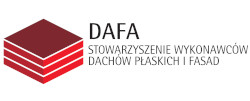Open Access (Artykuł w pliku PDF)
Influence of redispersible polymer powders on the adhesion of adhesives mortars based on calcium sulphoaluminate cement
mgr inż. Mateusz Łukasik, Politechnika Łódzka, Wydział Chemiczny, Centrum Badawczo-Rozwojowe, Atlas sp. z o.o.
ORCID: 0000-0003-1257-6069
dr hab. inż. Anna Masek, prof. PŁ, Politechnika Łódzka, Wydział Chemiczny
ORCID: 0000-0003-3785-1995
dr inż. Bartosz Michałowski, Centrum Badawczo-Rozwojowe, Atlas sp. z o.o.
ORCID: 0000-0002-3955-2924
dr inż. Marcin Kulesza, Centrum Badawczo-Rozwojowe, Atlas sp. z o.o.
Adres do korespondencji: Ten adres pocztowy jest chroniony przed spamowaniem. Aby go zobaczyć, konieczne jest włączenie w przeglądarce obsługi JavaScript.
DOI: 10.15199/33.2023.08.02
Doniesienie naukowe
Streszczenie. W artykule zaprezentowano wpływ pięciu rożnych redyspergowalnych proszków polimerowych (RPP) na wytrzymałość na rozciąganie (przyczepność w układzie wielowarstwowym) zapraw klejących do płytek ceramicznych (CTA), zawierających jako spoiwo wyłącznie cement wapniowo-siarczanoglinianowy (CSA). Wyniki badań wskazują, że dodatek RPP do zaprawy na bazie CSA powoduje wzrost wytrzymałości na rozciąganie oznaczanej jako przyczepność początkowa oraz po starzeniu termicznym. W przypadku wytrzymałości na rozciąganie próbek, badanych po zanurzeniu w wodzie, zaobserwowano rożny wpływ w zależności od zastosowanego redyspergowalnego proszku polimerowego. Niezależnie od rodzaju RPP stwierdzono zmniejszenie wytrzymałości na rozciąganie próbek badanych po cyklach zamrażania i rozmrażania. Przeprowadzone badania wykazały, że istnieje możliwość opracowania zapraw klejących na bazie CSA, zawierających redyspergowalne proszki polimerowe, do stosowania wewnątrz pomieszczeń. Wyzwaniem badawczym, związanym z odpornością na zamrażanie, jest opracowanie CTA do zastosowania na zewnątrz obiektów.
Słowa kluczowe: zaprawy klejące do płytek ceramicznych (CTA); cement CSA; przyczepność; redyspergowalne proszki polimerowe (RPP); wytrzymałość na rozciąganie.
Abstract. The purpose of this study was to investigate the effects of five different redispersible polymer powders (RDPs) on the tensile strength (adhesion in a multi-layer system) of ceramic tile adhesive mortars (CTAs) containing only calcium sulphoaluminate cement (CSA) as a binder. The results show that the addition of RDPs to CSA-based mortar results in an increase in tensile strength determined as initial adhesion and as adhesion after thermal aging. In the case of tensile strength tested after immersion of the samples in water, different effects were observed depending on the RDPs used. Regardless of the redispersible polymer powder used, a reduction in tensile strength was noticeable for samples tested after freeze-thaw cycles. The study showed that it is possible to develop a CSA- -based ceramic tile adhesive using redispersible polymer powders for indoor use. The research challenge, related to freeze- -thaw resistance, is to develop a CTA for outdoor applications.
Keywords: ceramic tile adhesive (CTA); CSAcement; adhesion; redispersible polymer powders (RDPs); tensile strength.
Literatura
[1] 2022 Global Status Report for Buildings and Construction https://www. unep.org/resources/publication/2022-global-status-report-buildings-and-construction [dostęp 28.06.2023].
[2] Stancu C, Dębski D, Michalak J. Construction Products between Testing Laboratory and Market Surveillance: Case study of Cementitious Ceramic Tile Adhesives. Materials. 2022; https://dor. org/10.3390/ma15176167.
[3] Michalak J. Ceramic Tile Adhesives from the Producer’s Perspective:A Literature Review. Ceramics. 2021; https://doi.org/10.3390/ceramics4030027.
[4] Cho YK, Jung SH, Choi YC. Effects of chemical composition of flyash on compressive strength of flyash cementmortar. Constr. Build.Mater. 2019; https://doi.org/10.1016/j.conbuildmat. 2019.01.208.
[5] Zhang Y, Zhao Q, Liu C, Zhou M. Properties comparison of mortars with welangum or cellulose ether. Constr. Build. Mater. 2016; https://doi. org/10.1016/j.conbuildmat. 2015.10.116.
[6] Jumate E, Manea DL, Aciu C, Molnar L, Fechete R. Innovative Materials Made by Adding Cellulose Ethers to Cement Mortars. Procedia Technol. 2015; https://doi.org/10.1016/j.protcy. 2015.02.042.
[7] Lutz H, Bayer R, Dry Mortars. In Ullmann’s Encyclopedia of Industrial Chemistry; Willey Online Library: Hoboken, NJ, USA, 2015.
[8] Łukasik M, Michałowski B ,Michalak J. Assessment of the constancy of performance of cementitious adhesives for ceramictiles: Analysis of the test results Commissioned by Polish Market Surveillance Authorities. Appl. Sci. 2020; https://doi.org/10.3390/app10186561.
[9] Schulze J. The use of redispersible powders in cement mortars. Ton Industrie Zeitung. 1985; 9
[10] Kulesza M, Dębski D, Fangrat J, Michalak J. Effect of redispersible polymer powders on selected mechanical properties of thin-bed cementitious mortars. Cem.Wapno. Bet. 2020; https://doi.org/10.32047/CWB. 2020.25.3.1.
[11] Niu L, Lei L, Xia Z. Redispersible polymer powder functionalized with NMA and its adhesive properties in dry-mixed coatings. J. Ahes. Sci. Technol. 2013; https://doi.org/10.1080/01694243.2012.742401.
[12] Ohama Y. Polymer-based admixtures. Cem. Concr. Compos. 1998. https://doi.org/10.1016/S0958-9465 (97) 00065-6.
[13] Baaldens A, Van Gemert D, Schorn H, Ohama Y, Czarnecki L. From microstructure to macrostructure: anintegral model of structure formation in polymer modified concrete. In Proceedings of the RILEM Materials and Structures. 2005; https://doi.org/10.1617/14215.
[14] Silva DA, Roman HR, Gleize PJP. Evidences of chemical interaction between EVA and hydrating Portland cement. Cem. Concr. Res. 2002; https://doi.org/10.1016/S0008-8846 (02) 00805-0.
[15] PN-EN 197-1:2012 – Cement – Część 1: Skład, wymagania i kryteria zgodności dotyczące cementów powszechnego użytku; 2012.
[16] Deklaracja Środowiskowa III typu – EPD. Cementy CEM I, CEM II, CEM III, CEM IV, CEMV Produkowane w Polsce. Stowarzyszenie Producentów Cementu. ITB: Warsaw, Poland, 2020.
[17] Michalak J. Sustainability Assessment of Cementitious Ceramic Tile Adhesives. Buildings. 2023; https://doi.org/10.3390/buildings13051326.
[18] Aranda MAG, De la TorreAG. Sulfoaluminate cement,Woodhead Publishing Series in Civil and Structural Engineering. 2013; https://doi. org/10.1533/9780857098993.4.488.
[19] Pacheco-Torgal F, Jalali S, Labrincha J, John VM. Eco-Efficient Concrete, Woodhead Publishing, 2013.
[20] Winnefeld F, Lothenbach B. Hydration of Calcium Sulfoaluminate Cements – Experimental Findings and Thermodynamic Modelling. Cem. Concr. Res. 2010; https://doi.org/10.1016/j.cemconres. 2009.08.014.
[21] Guan Y, Gao Y, Sun R. et al. Experimental study and field application of calcium sulfoaluminate cement for rapid repair of concrete pavements. Front. Struct. Civ. Eng. 2017. https://doi.org/10.1007/s11709-017-0411-0.
[22] Pooni J, Robert D, Giustozzi F, Setunge S, Xie YM, Xia J. Noveluse of CalciumSulfoaluminate (CSA) Cement for treating. Problematic Soils. Constr. Build. Mater. 2020; https://doi.org/10.1016/j.conbuildmat. 2020.120433.
[23] Mohan MK, Rahul AV, De Schutter G,Van Tittelboom K. Early age hydration, rheology and pumping characteristics of CSA cement-based 3D printable concrete. Constr. Build. Mater. 2021; https://doi.org/10.1016/j. conbuildmat. 2020.122136.
[24] Pelletier-Chaignat L,Winnefeld F, LothenbachB, SaoutGL,MullerCJ, FamyC. Influence of the calciumsulfate source on the hydrationmechanismof Portland cement–calcium sulphoaluminate clinker–calcium sulfate binders. Cem. Concr. Compos. 2011; https://doi.org/10.1016/j.cemconcomp. 2011.03.005.
[25] Chaunsali P, Mondal P. Influence of MineralAdmixtures on Early-Age Behavior of CalciumSulfoaluminate Cement.ACIMater. J. 2015; https://doi. org/10.14359/51687240.
[26] Le Saout G, Lothenbach B, HoriA, Higuchi T,Winnefeld F. Hydration of Portland cement with additions of calcium sulfoaluminates. Cem. Concr. Res. 2013; https://doi.org/10.1016/j.cemconres.2012.10.011.
[27] EN 12004:2007+A1:2012; Adhesives for Tiles – Requirements, Evaluation of Conformity, Classification and Designation. European Committee for Standardization (CEN): Brussels, Belgium, 2012.
[28] ISO 13007-1:2014; Ceramic Tiles – Grouts and Adhesive – Part. 1: Terms, Definitions and Specifications for Adhesives. International Organization for Standardization (ISO): Geneva, Switzerland, 2014.
[29] EN 1348:2007; Adhesives for Tiles – Determination of Tensile Adhesion Strength for Cementitious Adhesives. European Committee for Standardization (CEN): Brussels, Belgium, 2007.
[30] Michalak J, Ziomek R. Assessment of Cementitious Ceramic Tile Adhesives in the Light of Repeatability and Reproducibility of the Tensile Adhesion Strengt hMeasurements. Materials. 2023; https://doi.org/10.3390/ma16124245.
Przyjęto do druku: 13.07.2023 r.
Materiały Budowlane 08/2023, strona 6-11 (spis treści >>)



























